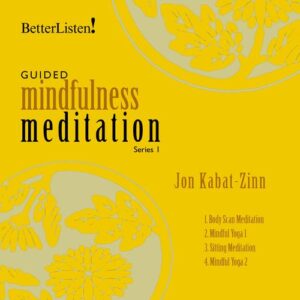The term Mindfulness refers to maintaining a moment-by-moment awareness of your feelings, thoughts, and sensations as well as the surrounding environment while paying attention without judging them. It involves turning your thoughts into what you are sensing in the present moment rather than the past and the future. Various practices help to achieve the state of mindfulness such as tai chi, qigong, yoga, and mindfulness meditation. The moment-by-moment awareness of your feelings and thoughts helps you improve your focus, learning capability, working memory, cognitive flexibility health, and relationship satisfaction. It also helps you cope with depression, stress as well as turnover, and burnout at your work.
The roots of mindfulness
This psychological state finds its roots in the teachings of Hinduism and Buddhism that can be traced back thousands of years. At the same time, the actual practice of mindfulness was started over the past few decades. Although it was tied to Hinduism through meditation and yoga it became popularized in the West. The people in the West learned this state through Buddhism where mindfulness was the first step on the way to enlightenment.
The benefits of practicing mindfulness
Mindfulness is a very important state that is used in various kinds of therapy. Researchers found various benefits of this state. These involve:
- Improves ability to deal with illness.
- Increases recovery from a potentially terminal illness.
- Improves general health.
- Improves academic success.
- Reduces stress.
- Helps to get rid of depression.
- Reduces psychological distress.
- Lowers burnout and turnover at work.
- Better relationships.
Improves ability to deal with illness
Mindfulness helps the patients improve their quality of life by focusing less on the pain. It cannot get rid of symptoms of the illness but helps to manage it. Researchers have found the benefits of mindfulness in coping with cancer in cancer patients and those who are suffering from a potentially terminal and chronic illness. It enhances spirituality, and vigor, and also facilitates post-traumatic growth. It relieves fatigue and reduces symptoms of stress to enhance the ability to cope with illness.
Improves general health
General health is also improved by mindfulness. Researchers found that by practicing this state cardiovascular health can be improved. More focus on physical activity, healthier body mass index, and lower incidence of smoking help to cope with cardiovascular health. It is stated that when the individual is skilled in nonreactivity and nonjudging, mindfulness lowers blood pressure.
Reduces stress
It is considered that the key element to fighting stress is the state of mindfulness. It handles stress by improving the regulation of emotions which leads to a better mood and relieves anxiety. It induces a state of relaxation that lowers heart rate, and blood pressure to reduce stress. It improves brain functioning, immune function, thinking capability, and perception thus reducing stress.
Helps to get rid of depression
The effective supplemental treatment for depression is considered mindfulness by researchers. It increases self-compassion while practicing yoga alone. It helps the individual to remove negative emotions and improves emotion regulation for better management of depression. Mindfulness is a better treatment as compared to reducing the thoughts in patients suffering from chronic depression with suicidal thoughts.
Improves academic success
Academic success is improved by practicing mindfulness by increasing focus, attention, and awareness. By noticing your whole bodily functions you can get rid of the practices that waste your time and deviate your attention while improving the practices that increase your attention at work. Thus enhanced attention to your work leads to improved academic success.
Better relationships
Mindfulness helps the individual to better communicate in social situations while solving problems by increasing focus and attention to the problem. It can also help to get rid of negativity and thus successfully respond to stress in relationships that increase relationship satisfaction.
How to practice mindfulness?
There are several ways to practice mindfulness. These may involve:
- Mindful Wakeup
- Mindful Eating
- Mindful Pause
- Mindful Workout
- Mindful Driving
Mindful Wakeup
A mindful wake-up means starting your day with a purpose. Setting an intention and then keeping the primal motivations in mind can change your day. Practice it in the morning before checking any email or phone. The following steps can help you practice this:
- On waking, sit in a chair or your bed in a relaxed state.
- Take three deep, nourishing, and long breaths.
- Ask yourself the intention for today.
- Set your intention for the day.
- Check-in with yourself throughout the day.
Mindful Eating
Mindful eating means enjoying every mouthful because it is one of the most pleasurable experiences to satisfy yourself, not just the need for nutrition but more subtle needs and senses. The following steps can help you practice this:
- Breathe before eating.
- Listen to your body.
- Eat according to your hunger.
- Practice peaceful eating.
- Do not eat it if you do not love it.
Mindful Pause
The mindful pause means to rewire your brain. Mindfulness shifts the fast brain to a slow brain means shifting deliberate actions to awareness. Shifting the balance gives your slow brain more power to take some work. The following steps can help you practice this:
- Trip over what you want to do.
- Refresh your triggers regularly.
- Create new patterns.
Mindful Workout
A mindful workout means activating your mind and your muscles. This may involve riding a bike, sweating it out on a treadmill, and lifting weights. Physical activities such as dancing the Tango and taking a swim keep your blood pumping and invigorate every cell in your body as well as but also shift you from feeling distracted to feeling capable and strong. The following steps can help you practice this:
- Be clear about your aim.
- Warm-up yourself.
- Settle into a rhythm.
- Challenge yourself.
- Cooldown.
- Take rest.
Mindful Driving
Mindful driving means driving yourself calm and not becoming crazy. The snarliest traffic jam can help you to build your mindfulness muscle. It can increase your sense of connection to other people as well as restore some perspective and balance. The following steps can help you practice this:
- First, take a deep breath.
- Ask yourself where you want to go.
- Remember the ride in your mind.
- Look around and recognize that all the other drivers are just like you.
- Take a drive carefully.
References:
- Cherkin, D. C., Sherman, K. J., Balderson, B. H., Cook, A. J., Anderson, M. L., Hawkes, R. J., … & Turner, J. A. (2016). Effect of mindfulness-based stress reduction vs cognitive behavioral therapy or usual care on back pain and functional limitations in adults with chronic low back pain: a randomized clinical trial. Jama, 315(12), 1240-1249.
- Loucks, E. B., Britton, W. B., Howe, C. J., Gutman, R., Gilman, S. E., Brewer, J., … & Buka, S. L. (2016). Associations of dispositional mindfulness with obesity and central adiposity: the New England family study. International Journal of Behavioral Medicine, 23(2), 224-233.
- Tomfohr, L. M., Pung, M. A., Mills, P. J., & Edwards, K. (2015). Trait mindfulness is associated with blood pressure and interleukin-6: exploring interactions among subscales of the Five Facet Mindfulness Questionnaire to better understand relationships between mindfulness and health. Journal of Behavioral Medicine, 38(1), 28-38.
- Shawyer, F., Enticott, J. C., Özmen, M., Inder, B., & Meadows, G. N. (2016). Mindfulness-based cognitive therapy for recurrent major depression: A ‘best buy’ for health care? Australian & New Zealand Journal of Psychiatry, 50(10), 1001-1013.
The Dream Oak
Body, Mind, And Soul For A Fulfilled Life!










